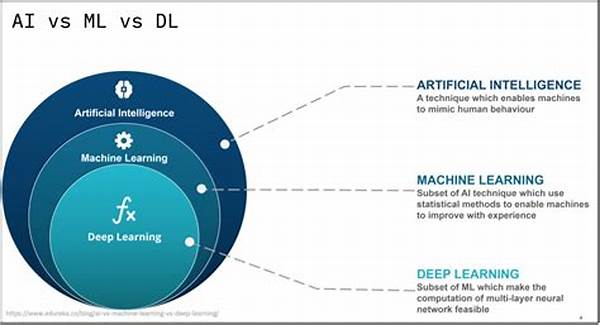In the ever-evolving landscape of technology, machine learning has become the invisible hand guiding our smartphones, emails, and online recommendations. But, amidst the sophistication of this technology, it’s not devoid of its own set of issues. At the forefront of these is the challenge of bias, which has amplified the call for effective bias reduction in machine learning. Let’s take a dive into this riveting subject and explore how reducing bias can not only enhance AI systems but also foster a fairer, more transparent technological future.
Understanding bias in machine learning is the critical first step toward creating more equitable AI systems. Machine learning models are only as good as the data fed into them. Often, this data reflects the biases present in the real world. For instance, if a recruitment algorithm is trained mostly on successful candidates from one demographic, it might unwittingly penalize candidates from different backgrounds. This inherent bias can lead to unequal opportunities and perpetuate societal stereotypes—a pressing issue in a world striving for equality.
Bias reduction in machine learning not only improves the accuracy of AI models but also ensures their ethical alignment with society’s values. While data-driven decisions offer numerous benefits, they must be made with fairness at the heart. By implementing strategies to mitigate bias, companies can engender trust and commitment, which is crucial as AI continues to permeate every aspect of our lives. The journey to bias reduction in machine learning is not just a technical challenge; it’s a societal imperative.
Techniques for Bias Reduction in Machine Learning
The quest for bias reduction in machine learning involves several strategies. One of the most promising is the diversification of training data. Ensuring that datasets are representative of various demographics can substantially diminish bias, offering a more balanced perspective. Additionally, employing fairness constraints during model training is another effective approach. These constraints can adjust the model’s output to be fair across different groups, offering a significant stride toward fairness.
Another compelling tactic is the integration of regular audits into AI systems. Regular checks on algorithm outputs can highlight and rectify biases over time. Furthermore, involving interdisciplinary teams in designing AI models ensures that a wider range of perspectives is considered, potentially highlighting and correcting biases that a homogeneous team might miss.
—
Understanding Bias Reduction in Machine Learning
As machine learning continues its meteoric rise, minimizing bias becomes increasingly vital. Imagine an AI that can’t distinguish truth from stereotype—frightening, right? Enter the domain of bias reduction in machine learning, the unsung hero ensuring our algorithms don’t pick up bad habits. Here, the emphasis is on the clever strategies and thoughtful practices employed by data scientists to neutralize bias and champion equity in AI.
The Emotional Cost of Biased AI
Bias doesn’t just skew results; it affects real lives. For example, biased AI in law enforcement or credit scoring can unjustly impact individuals based solely on algorithmic prejudice. It’s not just about accuracy; it’s about preserving human dignity and fairness. This is where bias reduction becomes a lighthouse, guiding AI towards more just outcomes.
Incorporating fairness into machine learning involves concerted efforts, often requiring a shift in how data is handled. These changes aren’t just for the geeks huddled over their computer screens but for the people whose lives are touched by these digital decisions. It is about creating a society where technology complements, not compromises, equity.
The Societal Imperative for Bias-Free AI
As bias in AI threatens to widen societal gaps, bias reduction in machine learning stands as our shield. It’s not just a technological challenge but a moral one. By urging businesses and governments to adopt these practices, we invoke a brighter future where AI respects all individuals equally, and algorithms reflect fairness, not fallacy. The impact is profound and far-reaching, touching education, healthcare, employment, and beyond.
Curious about how you can contribute to this noble cause? Whether you’re a data scientist or a policy advocate, understanding bias reduction methods can empower you to make a difference. After all, in the quest for technological advancement, let’s not forget the essence of empathy and equality.
Challenges in Bias Reduction in Machine Learning
The Complexity of Identifying Bias
Bias in machine learning isn’t always overt, which can make it incredibly challenging to identify and address. Often, bias is woven into the dataset’s historical context. Detecting it requires a keen eye and a deep understanding of both the data at hand and the societal implications it carries. Addressing these underlying biases demands collaboration across disciplines.
Solutions to mitigate these biases are as diverse as the biases themselves. Employing diverse training sets, applying algorithmic fairness, and conducting regular audits are all part of a broad toolkit. These methods, while diverse, share a common goal: to craft AI models that are as free from bias as possible.
—
Examples of Bias Reduction Techniques
Here are some practical approaches to achieving bias reduction in machine learning:
Exploring Bias Reduction Methods
In a world where machine learning guides decisions, reducing bias is crucial. Without it, the risk is algorithms that reinforce stereotypes instead of breaking them down. Bias reduction in machine learning ensures AI progresses in a direction aligned with human values, not against them.
The Road to Ethical AI
The path to bias reduction in machine learning requires education, innovation, and a commitment to fairness. As we journey towards a future powered by AI, it’s imperative to ensure these systems work for, not against, society. Awareness is the first step; action, the second. By embracing best practices in bias reduction, we pave the way for an AI-enhanced world where technology empowers without discrimination.
Armed with the knowledge and tools to make AI equitable, we can transform the disadvantage into empowerment. For businesses aiming for ethical AI, this marks both challenge and opportunity—seize it and be part of the change.

